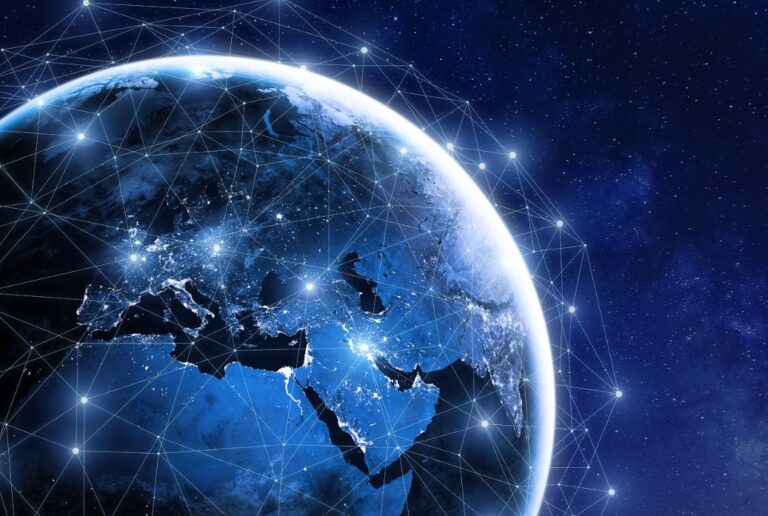Technology is continuing to advance at a rate that has never been seen before, ushering in a new era of innovations as we move farther into the 21st century. As of the year 2023, a number of developing technologies are causing a stir across a variety of sectors, with the potential to revolutionize the way in which people live, work, and interact with one another.
In this article, we will take a look at the six main technological innovations of 2023. These innovations range from sophisticated artificial intelligence to ground-breaking advancements in healthcare and energy storage.
Table of Contents
The 6 main technological innovations of 2023
1. Generative AI
Generative models of artificial intelligence are quickly permeating all aspects of society. In order for the models to identify and make use of data patterns, they employ sophisticated algorithms. Models like GPT-4, which are changing the face of AI, are indicative of this era. Not only can these computers recognize and mimic human-like text, but they can also generate it without any effort at all.
Generative AI is taking a look at how far computers can go in terms of creativity and problem-solving, from making music to creating realistic visuals and even helping with content production. But Gen AI can do much more than just generate writing, photos, and audio; it can even design drugs to target particular medical ailments, as well as assist with engineering and construction.
2. Edge computing
An alternative to centralising data processing in the cloud, edge computing moves processing closer to the physical location of data generators. The standard model of cloud computing involves uploading data to a remote server or data centre. The opposite is true with edge computing, which moves part of these computations to the “edge” of the network—either the device or a nearby server.
The IoT, smart cities, healthcare, and industrial automation are just a few of the many areas that benefit from edge computing. In the Internet of Things (IoT), for instance, edge devices can handle sensor data locally, resulting in quicker insights and less interactions with a central server.
Benefits include lower latency, more efficient use of bandwidth, higher reliability, and more privacy and security, all of which indicate a move towards decentralized computing. When it comes to applications that demand processing and responsiveness in real-time, this paradigm is perfect.
3. Designer phages
An innovative step forward in biotechnology is the creation of designer phages, sometimes called engineered or synthetic bacteriophages. They are viruses with genetic engineering that can infect and control certain microbiome bacteria. By eliminating pathogens and other undesirable microorganisms, they have potential use in medicine, public health, and agricultural practices.
The potential for this technology to improve agriculture by eliminating undesirable or harmful microorganisms, treat diseases, and generally improve people’s health is enormous. Rising food production, innovative biotechnologies, and decreased antibiotic resistance are a few ways it may moderately affect industry, the economy, and the environment. The availability and control of this technology for various groups and purposes determine its impact on equity, though.
4. Flexible batteries
Energy storage technology known as “flexible batteries” can be bent, stretched, and conformed to different shapes without losing any of its functionality. The building materials are the defining characteristic of flexible batteries. These batteries can be bent and flexed without compromising their structural integrity or performance because they use flexible substrates like graphene or polymers.
Flexible batteries, in contrast to their rigid counterparts, may mould to the shape of the devices they charge. Applications that require a high level of flexibility for comfort and functionality, such as medical implants, electronic fabrics, and wearable gadgets, greatly benefit from this versatility. In order to progress wearable technology, which includes apparel, smartwatches, fitness trackers, and more, flexible batteries are crucial.
When it comes to medical implants, flexible batteries are lifesavers. Flexible batteries, which can mould to the contours of the human body, offer a more pleasant and efficient way to charge these implants, like glucose monitors or pacemakers, over the long haul.
5. AI in healthcare
In healthcare, artificial intelligence (AI) means analysing complicated medical data, making predictions, and aiding healthcare professionals in clinical decision-making through the use of powerful computing algorithms and machine learning techniques.
This field utilizes machine learning algorithms to analyze and accurately diagnose various medical diseases, including tumour, abnormalities, and more. Improved diagnostic speed and accuracy may result from this.
By enhancing human capacities with intelligent algorithms and automation, it improves disease detection, enables personalized therapy, optimises resource allocation, and improves patient outcomes. It revolutionises several parts of the healthcare ecosystem.
6. Wearable plant sensor
An innovative use of technology in farming, wearable plant sensors can track the health and growth of plants in real time, regardless of their surroundings. Attached to or embedded directly into plants, these gadgets offer researchers and farmers invaluable data.
Wearable accessories with these small and lightweight sensors allow for the non-invasive and real-time monitoring of vital plant characteristics including moisture, temperature, humidity, light exposure, and nutrient content.
Gardeners, farmers, and researchers can use wearable plant sensors to gather and analyse data on irrigation, fertilization, and overall plant health. This data helps with sustainable and efficient plant care practices and gives us a better understanding of plants. By reducing the need for water and fertilizer and by detecting disease symptoms at an early stage, this technology has the potential to boost agricultural output and plant health.
Potential solutions to the world challenges
These innovations are forging a future in which the boundaries of what is possible continue to expand. These innovations include the creative capacities of artificial intelligence (AI), the precision of designer phages, the adaptability of flexible batteries, and the integration of technology in healthcare and agriculture. The use of these technologies not only promises to boost efficiency and capacities. But it also has the ability to solve some of the most important problems that our planet is currently facing.
Read also: The new inventions of 2023 that will reshape our future












